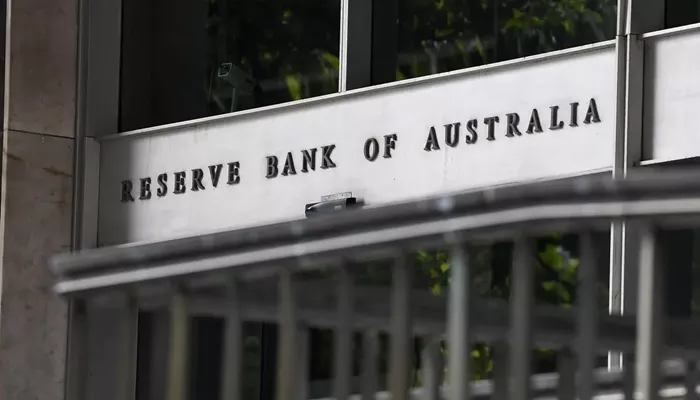Australia’s economic growth has remained sluggish in the most recent quarter, with a modest expansion fueled primarily by increased government spending. This situation presents a significant challenge for the Reserve Bank of Australia (RBA) as it grapples with persistent inflation that refuses to subside.
According to official data released on Wednesday, Australia’s gross domestic product (GDP) rose by only 0.8% year-on-year, marking the weakest growth rate—excluding pandemic-related impacts—since December 1991, when the country was in recession. On a per capita basis, GDP has declined for seven consecutive quarters, representing the worst performance since 1991. This disheartening trend has triggered a drop in the Australian dollar by 1%, alongside a decrease in policy-sensitive three-year government bond yields.
The disappointing figures have led swaps traders to increase their bets on an interest rate cut by April, with expectations now fully pricing in this possibility. “Weak growth highlights the need for interest rate cuts but this is difficult for the RBA to deliver given inflation remains uncomfortably high,” noted Alex Joiner, chief economist at IFM Investors. He emphasized that the economy is overly reliant on public sector support and population growth, while also suffering from stagnant productivity levels.
The RBA has been attempting to curb demand within the economy to alleviate price pressures; however, inflation has only gradually decreased and remains above the central bank’s target range of 2-3%. Callam Pickering, an economist at Indeed Inc., remarked, “The economy is undeniably weaker than the RBA had assumed,” suggesting that while labor markets remain tight and underlying inflation rates are high, this weak growth will pose significant challenges for monetary policy moving forward.
Annual economic growth is projected to fall short of the RBA’s forecast of 1.5% by year-end and is significantly below the decade average of 2.3%. The sluggish performance is likely to increase pressure on the government to continue ramping up spending to support economic activity, especially with a tight election looming in the next six months.
Despite these challenges, one consistently positive indicator has been Australia’s labor market. Unemployment remains historically low at 4.1%, and hiring trends have held steady. However, household spending has stagnated, contributing nothing to GDP growth in the third quarter. This stagnation can be attributed in part to energy bill relief rebates being classified as a shift from household expenditure to government spending within national accounts.
The household savings ratio has also climbed to 3.2%, as Australians have been saving tax cuts and utilizing government cost-of-living support measures. Meanwhile, public investment saw a notable increase of 6.3%, reaching record levels and contributing positively to GDP growth.
The latest data indicates that government spending rose by 1.4%, contributing 0.3 percentage points to GDP growth. However, non-dwelling construction fell by 2.7%, which detracted from overall economic performance. The Australian Bureau of Statistics (ABS) reported that quarterly growth in domestic prices was at its lowest since March 2021, reflecting softening goods prices alongside more resilient services prices.
As Australia navigates these economic headwinds, there are calls for more decisive action from the RBA regarding interest rates. Economists suggest that lower borrowing costs are essential for fostering a sustainable recovery and stimulating consumer spending.
In conclusion, Australia’s economic landscape is characterized by weak growth and persistent inflationary pressures that complicate monetary policy decisions for the RBA. While government spending continues to prop up economic activity, there is an urgent need for structural changes to enhance productivity and reduce reliance on public sector support.
As policymakers prepare for upcoming elections and grapple with these challenges, they must balance immediate economic needs with long-term strategies aimed at fostering sustainable growth. The resilience of the labor market offers some hope; however, without significant improvements in productivity and consumer confidence, Australia may struggle to achieve robust economic recovery in the near future.
READ MORE:

